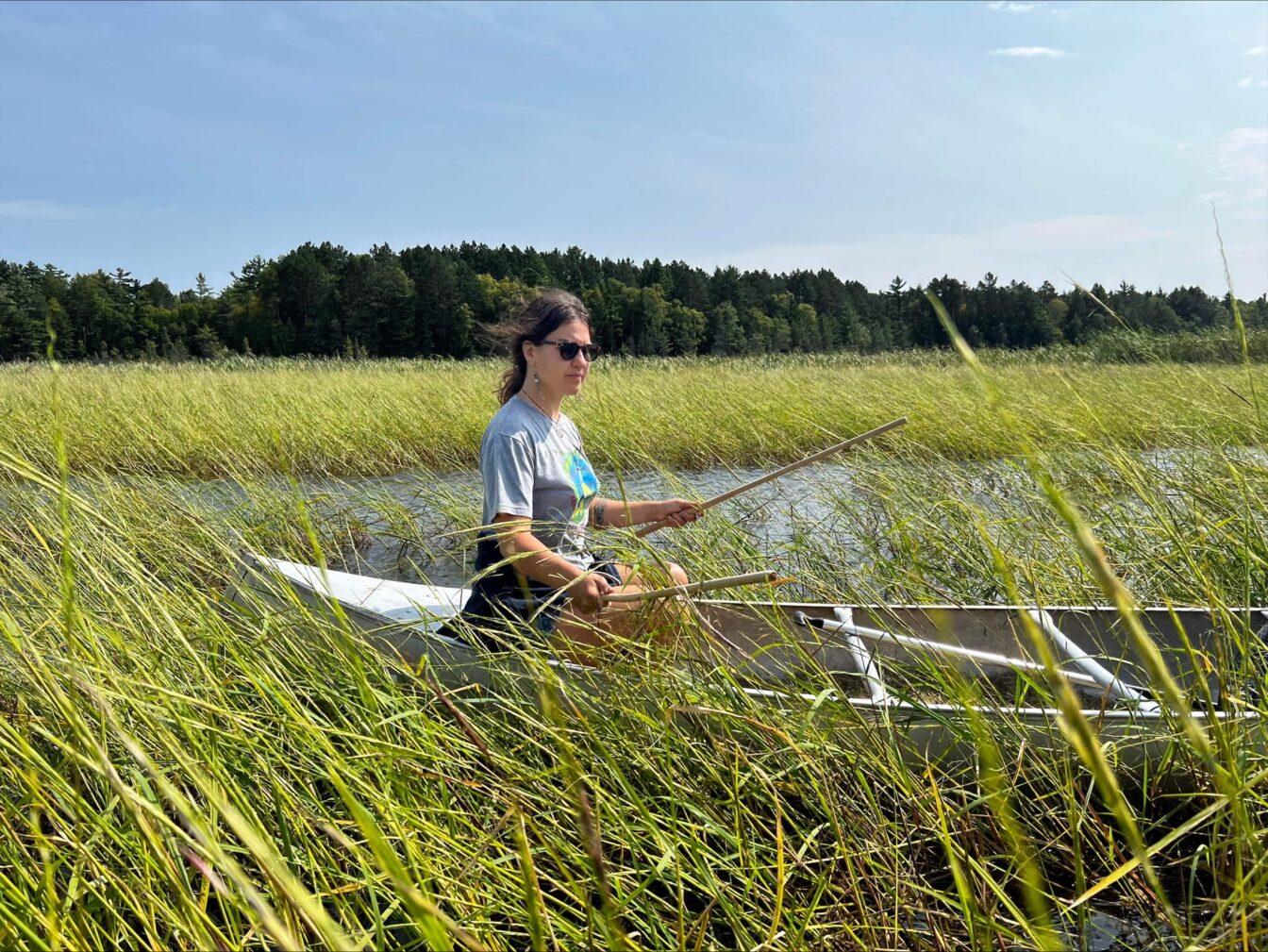Over the past 40 years, the amount of Manoomin has decreased by about 50%, wild rice technician at Trout Lake Station Sagen Quale said. Manoomin is Ojibwe for wild rice and translates to “good berry.”
But many families and tribal communities rely on it for food sovereignty and to last them through the winter until the next harvest season, Quale said.
Harvesting starts in late August and continues for the next three to four weeks, according to the Wisconsin Wetlands Association.
“The decline didn’t just start about 40 years ago — it started through pretty much the onset of settler colonialism through the manipulation and control of waterways in Northern Wisconsin,” Quale said.
The implementation of dams and intense logging throughout the 1800s also ties into Manoomin’s decline over the years, Quale said. Damming and logging flooded and drowned out the Manoomin, which is a vulnerable plant.
It’s this vulnerability that makes it difficult to come up with a one-solution approach to slow or stop the decline.
“It’s kind of difficult to say here’s the solution to stop the decline because you can’t really look at it with [a narrow view]. You really have to view it holistically,” Quale said.
The floating leaf stage is the most vulnerable stage of its life cycle, social scientist with the Wisconsin Sea Grant Deidre Peroff said. This stage is essential for seed regeneration, but water fluctuations can affect this sensitive stage of life for the plant and even stop it from creating rice that year.
Other threats Manoomin faces are from using improper boat speeds going through the wetlands, pollutants from mining like sulfate, pollutants from agriculture and invasive species like rice worm and milfoil, an invasive plant, Peroff said.
As a wild rice technician, Quale performs fieldwork in the wild rice beds throughout Northern Wisconsin. Over the summer, Quale said she and other researchers used “quadrant sampling” to collect data on the wild rice. Quadrat sampling involves a PVC pipe with an area of a half-meter squared.
Quale said she and the researchers would throw the quadrant into the water from a boat they had to paddle around slowly and carefully so they wouldn’t uproot or damage the rice. Whatever fell within the quadrant’s bounds is what they collected data on. They were specifically looking for what rice was there and vegetation both above and below the water.
For wild rice that was present within the quadrant, Quale said they also looked at attributes of it like its stage of life, if it had been eaten by waterfowl, how many stems there were or if it showed any signs of plant disease.
Quale said this type of job was perfect for Quale because it allowed her to combine her passion for environmental justice and food sovereignty.
“I think it’s just really important to be able to keep this kind of tradition of harvesting alive and also, I see it as, really, a gift — the plant,” Quale said.
Through the act of harvesting, natural reseeding occurs from hitting the plants with cedar knockers, Quale said. This process allows seeds to fall off and back into the water. Being an annual plant that relies on the seed bank and water, this process is important for the natural replanting of Manoomin.
But the harvest season — when the wild rice has come to fruition and is a mature grain — only happens briefly. And the wild rice harvest moon only happens once a year, so it’s important to hit the Manoomin at the right time, Quale said. Hitting it too early will prevent any natural replanting because the seeds will not be mature enough.
It’s also important to ensure Manoomin harvesters are doing so appropriately and with a license, Peroff said, since it’s a huge threat to the plant when immature and without knowledge of how to gather it.
One of the biggest needs of the tribes the Manoomin Outreach and Education Project connected with was wanting to engage tribal youth in Manoomin education and bring awareness to non-Indigenous people, Peroff said.
“The thing that kept coming back when we talked to people was that the biggest threat was really just lack of awareness,” Peroff said.
Current outreach and education events include hosting wild rice camps for both adults and youth to teach about harvesting and traditional ceremonies associated with it, Peroff said.
The project is also hosting a Manoomin symposium in early November for the first time since COVID-19, including a Tribal elders panel to discuss traditional harvesting, history and impacts of Manoomin on their lives.
“It’s a time for everyone to get together and celebrate the plant [Manoomin] and brainstorm about next steps or other strategies to increase awareness and appreciation for the plant,” Peroff said.
Another big aspect of the educational efforts of the Manoomin project was updating an outdated life cycle graphic of Manoomin, Peroff said. Tribes the project worked with wanted it to be more relevant and demonstrate the cultural and ecological significance of the species.
The completed graphic shows the complete life cycle of Manoomin with scanned images of the real plant and help from a Madison artist to make a two-dimensional art piece, Peroff said. With the help of an Ojibwe speaker, they were also able to translate it. The finished graphic is available on the project’s website.
“People like to say we’re giving land acknowledgments … ‘since time and memorial’ and that really is true, that this plant is older than any and all of us here,” Quale said. “And so I think it holds a lot of knowledge and it’s something that I think I learned from. I like to say that I learn from and have been learning with it this past summer.”


